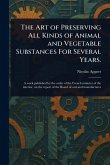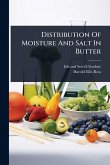"The Story of a Loaf of Bread" (1913) by Thomas Barlow Wood offers a comprehensive look at the journey of bread, from the field to the table. This engaging exploration delves into the science and social context surrounding bread production, explaining the cultivation of wheat, the milling process, and the art of baking. The book examines the nutritional value of bread and its significance in daily life. Wood's narrative provides insights into early 20th-century agricultural practices, technological advancements in food production, and the importance of bread as a staple food. It remains a valuable resource for those interested in the history of food science, domestic science, and the cultural significance of bread. This work has been selected by scholars as being culturally important, and is part of the knowledge base of civilization as we know it. This work was reproduced from the original artifact, and remains as true to the original work as possible. Therefore, you will see the original copyright references, library stamps (as most of these works have been housed in our most important libraries around the world), and other notations in the work. This work is in the public domain in the United States of America, and possibly other nations. Within the United States, you may freely copy and distribute this work, as no entity (individual or corporate) has a copyright on the body of the work. As a reproduction of a historical artifact, this work may contain missing or blurred pages, poor pictures, errant marks, etc. Scholars believe, and we concur, that this work is important enough to be preserved, reproduced, and made generally available to the public. We appreciate your support of the preservation process, and thank you for being an important part of keeping this knowledge alive and relevant.
Bitte wählen Sie Ihr Anliegen aus.
Rechnungen
Retourenschein anfordern
Bestellstatus
Storno








